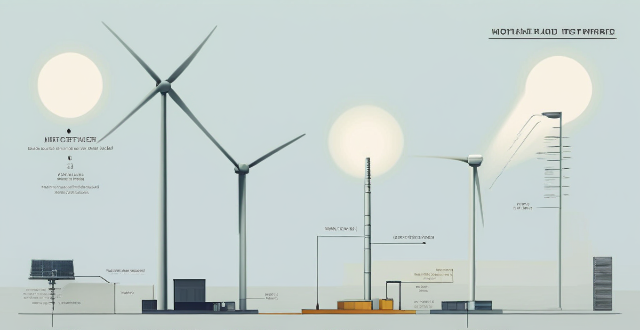The article discusses various innovative ways to generate sustainable energy. These methods include solar power, wind power, hydropower, geothermal energy, biomass energy, and wave energy, each with their unique techniques and systems.

Innovative Ways to Generate Sustainable Energy
Sustainable energy generation is becoming increasingly important as we look for ways to reduce our carbon footprint and move towards a more environmentally friendly future. Here are some innovative ways to generate sustainable energy:
1. Solar Power
- Photovoltaic Cells: These cells convert sunlight directly into electricity. They can be installed on rooftops, in large solar farms, or even on smaller devices like calculators.
- Solar Water Heating: This system uses solar energy to heat water, reducing the need for traditional water heating methods.
- Concentrated Solar Power (CSP): CSP systems use mirrors to concentrate sunlight onto a small area, generating high temperatures that can be used to produce steam and drive turbines for electricity generation.
2. Wind Power
- Onshore Wind Turbines: These are the most common type of wind turbines, typically found in large groups known as wind farms.
- Offshore Wind Turbines: These are located in bodies of water and can capture stronger, more consistent winds than their onshore counterparts.
- Vertical Axis Wind Turbines (VAWTs): Unlike traditional horizontal axis wind turbines, VAWTs can capture wind from any direction.
3. Hydropower
- Dam-based Hydroelectric Power: This is the most common form of hydropower, where a dam is built across a river to store water. The potential energy of the stored water is then converted into kinetic energy as it flows through turbines, generating electricity.
- Run-of-river Systems: These systems do not require a dam and instead use the natural flow of a river to turn turbines and generate electricity.
- Tidal Power: This method harnesses the power of tides by constructing barrages across tidal estuaries. As the tide comes in and out, water flows through turbines to generate electricity.
4. Geothermal Energy
- Geothermal Heat Pumps (GHPs): These pumps use the constant temperature of the earth to heat and cool buildings.
- Geothermal Power Plants: These plants use steam from hot water deep within the earth's crust to drive turbines and generate electricity.
- Enhanced Geothermal Systems (EGS): EGS technology involves injecting cold water into hot rock layers deep underground, creating artificial fractures that allow for increased heat extraction.
5. Biomass Energy
- Anaerobic Digestion: This process involves breaking down organic matter in the absence of oxygen, producing biogas that can be used for heating or electricity generation.
- Combustion: Burning organic materials such as wood chips or pellets can generate heat for direct use or for electricity production via steam turbines.
- Gasification: This process converts organic materials into gaseous fuels like syngas, which can be burned for energy production with less pollution than combustion.
6. Wave Energy
- Point Absorbers: These devices float on the surface of the water and move up and down with the waves, capturing their energy through hydraulic systems or linear generators.
- Overtopping Devices: These structures allow waves to enter a reservoir above sea level, where they are then released back into the sea through low-head turbines to generate electricity.
- Oscillating Water Column (OWC): An OWC consists of a partially submerged structure with an opening to the sea below the water line. Waves cause water levels inside the column to rise and fall, compressing air above it which drives turbines to produce electricity.